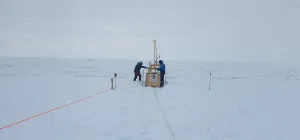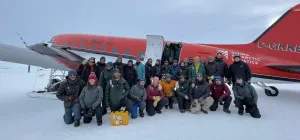
Over the years, a plethora of scientific equipment has been set up at and in the vicinity of the Princess Elisabeth Antarctica for scientists to collect data on nearly any parameter you can imagine, including temperature, wind speed, atmospheric particles, cloud, temperature, ozone, albedo, seismic activity, Earth’s geomagnetic field, and many more.
Some instruments have been fastened to the roof of the station. Others are housed in shelters not far from the station. Many others are situated tens of kilometers away in the middle of nowhere, on the Antarctic Plateau, at the Queen Maud Land coast, and in between.
Regardless of where they are situated, as time passes, these instruments - along with the small solar panels and wind turbines that power them - are subjected to punishing conditions including extreme cold, hard wind, and drifting snow. Just a few months in the Antarctic winter can be brutal for instruments.
This is where the IPF teams of engineers and technicians come in. At the beginning of each season, they survey the state of each of the instruments, make repairs, update software, and replace data cards so that the instruments can continue collecting continuous data series for scientists back in Europe (or wherever they may be based).
IPF engineers to the rescue
IPF Chief Technical Officer Johnny Gaelens has been working on fixing one of the Automatic Weather Stations (AWS) collecting data for the Swiss Federal Institute of Technology Lausanne (EPFL). It was set up on the edge of the Antarctic Plateau a few years ago. However, too much snow accumulation made it impossible to keep it in this location. The team has brought it back to the station for a full check and maintenance. Ultimately, this AWS is going to find a new location with less snow accumulation.
Closer to home on the roof of the station, Johnny has also been fixing the CIMEL, MaxDoas and Brewer Ozone Spectrophotometer, which the CLIMB project is using to study the formation of clouds and precipitation in Antarctica, as well as the ozone layer and the amount of UV radiation in the vicinity of the station.
One of the GPS equipped with a GNSS antenna that had been placed at the former Japanese Asuka Station for the GIANT project (which is measuring seismic activity in Antarctica) needed maintenance as well. The mini wind turbine that powered it had to be replaced following damage to it form severe weather during the winter months. Thanks to IPF engineer Nicolas Herinckx who went on-site to fix the problem, the GPS now has a brand new Superwind turbine powering it and is ready to gather data until next year’s BELARE expedition.
See more photos on our Instagram profile!
Download





















